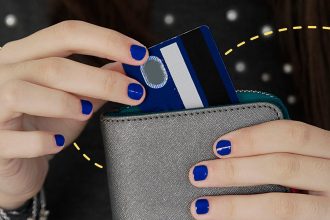ingwervanille/Getty Images
Key takeaways
- The U.S. Bank Cash+® Visa Signature® Card and the Chase Freedom Flex℠ are both rotating bonus category cards with multiple rewards categories, welcome bonus offers, no annual fees and intro APR offers.
- The U.S. Bank Cash+ would be a better option if you spend more in the specific rewards categories it offers and are better able to maximize cash back with this card.
- The Chase Freedom Flex would be a better option if your spending habits better align with this card’s bonus categories and you’re interested in more redemption options and card benefits.
Both the U.S. Bank Cash+® Visa Signature® Card* and the Chase Freedom Flex℠* can help you earn cash back on rotating bonus categories and select everyday purchases — but which is the best option for you? The distinction lies in what type of spending you’d like to earn rewards on, the cap on those rewards and more.
Main details
| Cards | U.S. Bank Cash+® Visa Signature® Card | Chase Freedom Flex® |
|---|---|---|
| Welcome bonus | $200 bonus after spending $1,000 in eligible purchases within the first 120 days of account opening. | Earn a $200 Bonus after you spend $500 on purchases in your first 3 months from account opening |
| Rewards rate |
|
|
| Intro APR | Zero percent intro APR for 15 billing cycles on purchases and on balance transfers made within 60 days of account opening (19.74 percent to 29.74 percent variable APR thereafter); balance transfer fee of 3 percent (minimum $5) of each transfer applies | Zero percent intro APR for 15 months on purchases and balance transfers (20.49 percent to 29.24 percent variable APR thereafter); intro balance transfer fee of 3 percent (minimum $5) of each transfer (applies to balances transferred in the first 60 days, then 5 percent thereafter). |
| Annual fee | $0 | $0 |
Chase Freedom Flex vs. U.S. Bank Cash+ Visa Signature Card highlights
Welcome bonus winner
Rewards rate winner
Foreign transaction fee winner
Which card earns the most?
Here’s a breakdown of how much you can earn by maxing out the capped bonus categories of each card and by spending on everyday purchases like groceries, dining and more.
U.S. Bank Cash+ Visa Signature Card vs. Chase Freedom Flex spending example
U.S. Bank Cash+
The U.S. Bank Cash+ offers 5 percent cash back in two eligible categories of your choice (on up to $2,000 in combined purchases per quarter, then 1 percent back). By maxing out the bonus category, you’ll earn $400 in cash back for the year. If you spend an additional $500 per month in the 2 percent cash back category (on one choice everyday category), you’ll get $120 in cash back annually.
Say you also spend $100 on miscellaneous items per month (that aren’t a part of the bonus categories) and $1,000 on travel through the Rewards Center each year. You’ll earn $12 and $50 back, respectively, each year. Add it all up, and you’ll earn a total of $582 in cash back for the year. Then, when adding in the welcome bonus, you’ll end up with $782 in cash back rewards at the end of your first year.
Chase Freedom Flex
The Chase Freedom Flex offers 5 percent cash back on activated bonus category purchases each quarter (on up to $1,500 in purchases, then 1 percent back). With this card, you’ll earn $300 annually by maxing out the capped 5 percent category. Say you also spend $125 on Lyft rides, $300 on dining, $50 on drugstore purchases and another $50 on all other purchases each month, plus $1,000 per year on travel through Chase Ultimate Rewards. That’s another $257 in rewards for the year. With this total spending, you’ll earn $557 in rewards annually. Add in the welcome bonus and you’ll earn $757 in cash back at the end of the first year.
Ultimately, how much you earn with each card comes down to your spending habits. If your spending habits better align with the Chase Freedom Flex, for example, then you’ll likely earn more with that card than with the U.S. Bank Cash+.
Why you should get the U.S. Bank Cash+ Visa Signature Card
The U.S. Bank Cash+ offers a wide variety of categories to choose from, including a number of less common categories like home utilities, cellphone providers and several specialty stores. However, it’s important to remember that you must activate your categories each quarter by logging in to your account. You can also sign up for email or text message reminders so you never miss category enrollment.
Additional benefits
The U.S. Bank Cash+ doesn’t have as many benefits as the Chase Freedom Flex, but you’ll get access to:
- U.S. Bank’s ExtendPay Plan, which allows you to divide eligible credit card purchases into fixed monthly payments for a small fee
- Rewards Center Shopping Deals, where you can earn a higher cash back rate on purchases with select merchants
- Visa Signature benefits, which include zero fraud liability, lost or stolen card reporting, pay-per-use roadside dispatch and more
Redemption options
Cash back can be redeemed for a statement credit, a direct deposit to an eligible U.S. Bank account or a prepaid U.S. Bank Rewards Card ($25 minimum cash back redemption). Note that cash rewards will expire 36 months after the billing cycle in which they were earned.
Recommended credit score
The recommended credit score for the U.S. Bank Cash+ is good to excellent (670 to 850).
Why you should get the Chase Freedom Flex
One of the main reasons to go with the Chase Freedom Flex over the U.S. Bank Cash+ is that the former technically earns rewards in the Chase Ultimate Rewards program, which is one of the most valuable credit card loyalty programs today. The Chase Freedom Flex also offers an incredible number of benefits for a no-annual-fee card, plus more ways to redeem rewards.
Additional benefits
Some of the Chase Freedom Flex’s numerous benefits include:
- Three free months of DoorDash DashPass, then you’ll automatically be enrolled in DashPass for 50 percent off for nine months (must activate by Jan. 31, 2025)
- Mastercard World Elite benefits, which include perks like a complimentary ShopRunner membership and a $5 Lyft credit every time you take three or more rides in one calendar month
- Security, item and travel protections like zero fraud liability, purchase protection, extended warranty coverage, cellphone protection (terms apply), trip cancellation/interruption insurance, 24/7 fraud monitoring, fraud alerts, an auto rental collision damage waiver and travel and emergency assistance services
- Access to Chase Offers and Shop Through Chase, both of which offer limited-time, exclusive deals with select retailers
Redemption options
You can redeem your rewards for statement credits, direct deposits, travel and event bookings through Chase Ultimate Rewards, gift cards, merchandise or shopping with points on Amazon.com or via PayPal. Unlike the U.S. Bank Cash+, Chase rewards do not expire as long as your account is open and in good standing.
Recommended credit score
The recommended credit score for the Chase Freedom Flex is good to excellent.
The bottom line
As you compare the U.S. Bank Cash+ Visa Signature Card vs. Chase Freedom Flex, know that either card is a decent choice. That said, choose the U.S. Bank Cash+ Visa Signature Card if you want a card that has a wide range of rewards categories to pick from. It also boasts a slightly higher cap on its 5 percent cash back category.
But if you’re more interested in card benefits, maximizing your earning potential and redemption options, choose the Chase Freedom Flex.
Ultimately, the better card for you will largely depend on your spending habits, the benefits you’re looking for and how you’d like to redeem your rewards.
*The information about the U.S. Bank Cash+® Visa Signature® Card and Chase Freedom Flex℠ has been collected independently by Bankrate. The card details have not been reviewed or approved by the card issuer.
Read the full article here
















